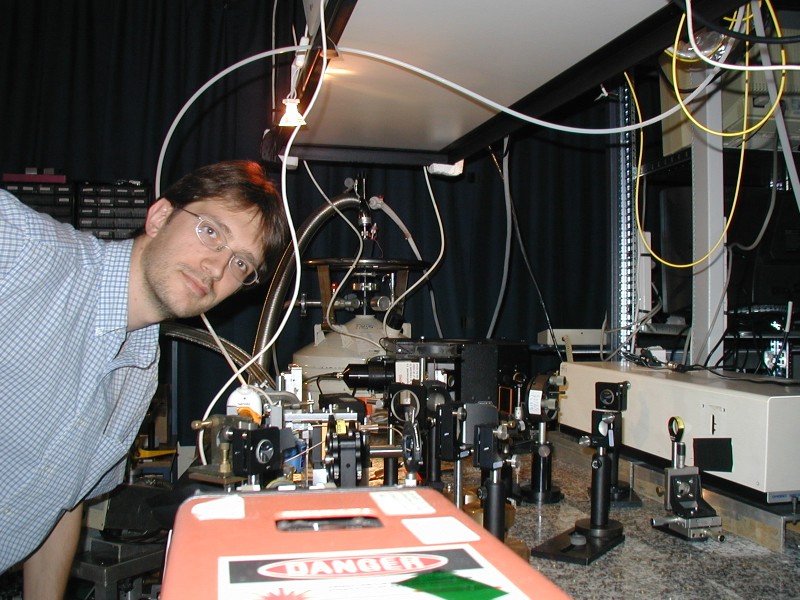

Del Mar Photonics - Reserve a spot in our CW lasers training workshop during this summer in San Diego, California
Del Mar Photonics featured customer:
Christophe Couteau, Photonic Entanglement Group (PEG) of
Prof Gregor Weihs, Institute for
Quantum Computing (IQC).
The IQC is part of the University of Waterloo in Ontario, Canada.
 |
 |
Pictures taken during installation are coming soon!
Computer-controlled high resolution SPECTROMETER OB' based on
broadly tunable CW laser, model LaserScan
TIS-FD-08/A
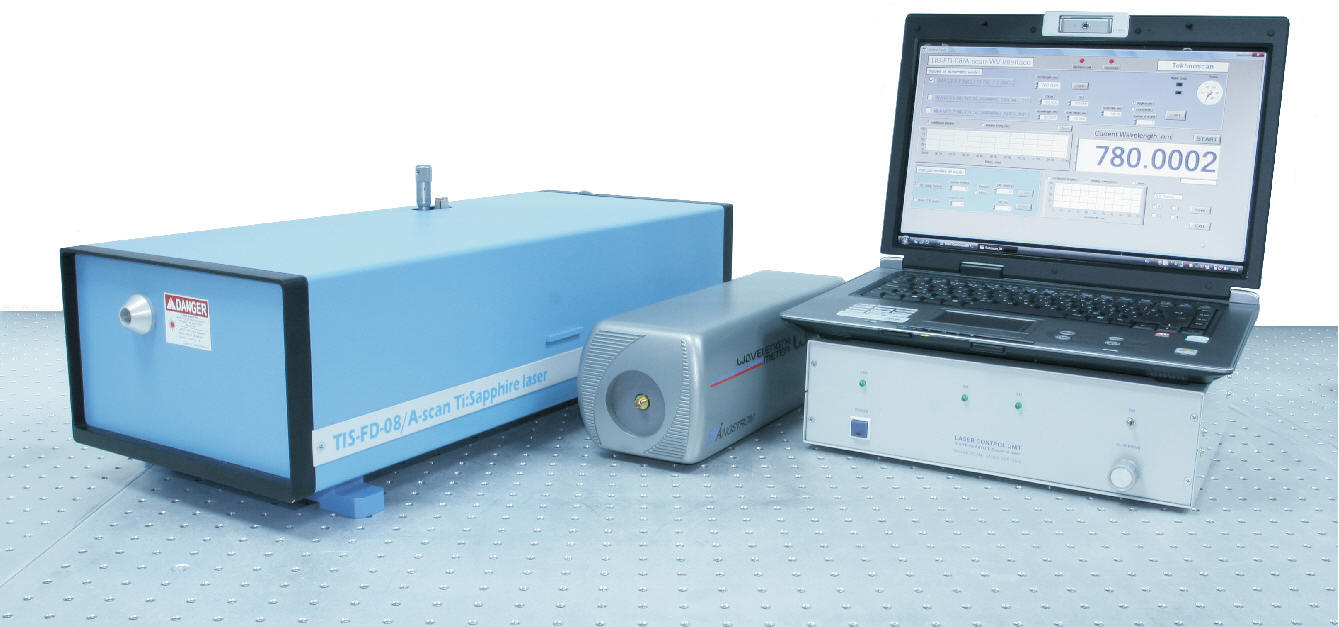
Request a quote for LaserScan - LaserScan
Publications
Towards a high efficiency electrically-injected source of single
photons for quantum cryptography.
S. Olivier, L. Grenouillet, S. Moehl, K. Kheng, J.M. Gйrard, C. Couteau, J.P.
Poizat, and A. Lemaоtre.
Submitted to ECIO 2005.
Geometric Phase of Dicke States of Excitons in N coupled Quantum Dots.
D.M. Tong, L.C. Kwek, C. Couteau, and C.H. Oh.
Mod. Phys. Lett. B 18(28-29)1433.
Correlated Photon Emission from a II-VI Quantum Dot.
C. Couteau, S. Moehl, F. Tinjod, J.M. Gйrard, K. Kheng, H. Mariette, J.A. Gaj,
R. Romestain, and J.P. Poizat.
Appl. Phys. Lett. 85 (25) 6251.
Spin relaxation dynamics in single Quantum Dot.
I. Favero, G. Cassabois, C. Voisin, C. Delalande, Ph. Roussignol, R. Ferreira,
C. Couteau, J.P. Poizat, and J.M. Gйrard.
Accepted to Phys. Rev. B .
Photon Correlations and Cross-Correlations from a Single CdTe/ZnTe Quantum Dot.
C. Couteau, S. Moehl, J. Suffczynski, J.A. Gaj, F. Tinjod, J.M. Gйrard, K. Kheng,
H. Mariette, R. Romestain and J.P. Poizat.
Acta Physica Polonica A 106 (2) 169.
Boоtes Quantiques II-VI comme sources de photons uniques.
C. Couteau, S. Moehl, F. Tinjod, J. Suffczynski, R. Romestain, J.C. Vial, J.M.
Gйrard, K. Kheng, and J.P. Poizat.
J. Phys. IV France 119 (2004) 165.
=======
Request a quote for LaserScan - LaserScan
* G. Weihs, M. Reck, H. Weinfurter, and A. Zeilinger, All-fiber
three-path Mach–Zehnder interferometer, Optics Letters 21 (4), 302–304 (1996).
* G. Weihs, M. Reck, H. Weinfurter, and A. Zeilinger, Two-photon interference in
optical fiber multiports, Physical Review A 54 , 893-897 (1996).
* G. Weihs, H. Weinfurter, and A. Zeilinger, Towards a long distance
Bell-experiment with independent observers, in "Experimental Metaphysics" R.S.
Cohen et al. (Eds.), Kluwer Academic Publishers, pp. 271 – 280, Dordrecht
(1997).
* G. Weihs, T. Jennewein, H. Weinfurter, and A. Zeilinger, Acta Physica Slovaca
47 (3/4), 337-340, (1997).
* G. Weihs, T. Jennewein, C. Simon, H. Weinfurter and A. Zeilinger, Violation of
Bell's inequality under strict Einstein locality conditions, Physical Review
Letters 81 (21), 5039–5043 (1998).
* G. Weihs, T. Jennewein, C. Simon, H. Weinfurter and A. Zeilinger, A Bell
Experiment under Strict Einstein Locality Conditions, pp. 267–269 in
Epistemological and Experimental Perspectives on Quantum Physics, D.
Greenberger, W. L. Reiter, and A. Zeilinger (Eds.), Kluwer Academic Publishers,
Dordrecht 1999.
* P. G. Kwiat, A. G. White, I. Appelbaum, J. R. Mitchell, O. Nairz, G. Weihs, H.
Weinfurter and A. Zeilinger, High-Efficiency Interaction-Free Measurements,
Phys. Rev. Lett. 83 (23), 4725–4728 (1999).
* C. Simon, G. Weihs, A. Zeilinger, Quantum Cloning and Signalling, Acta Physica
Slovaca 49, no. 4, 755 (1999).
* C. Simon, G. Weihs, A. Zeilinger, Optimal Quantum Cloning and the
Universal-NOT without Quantum Gates , J.Mod.Opt. 47, 233–246 (2000).
* T. Jennewein, C. Simon, G. Weihs, H. Weinfurter, and A. Zeilinger, Quantum
Cryptography with Polarization Entangled Photons, Phys. Rev. Lett. 84 (20),
4729–4732 (2000).
* C. Simon, G. Weihs, and A. Zeilinger, Optimal Quantum Cloning via Stimulated
Emission, Phys. Rev. Lett. 84 (13), 2993–2996 (2000).
* T. Jennewein, U. Achleitner, G. Weihs, H. Weinfurter, and A. Zeilinger, A fast
and compact quantum random number generator, Rev. Sci. Inst. 71 (4), 1675–1680
(2000).
* N. Gisin, W. Tittel, J. Rarity, and G. Weihs, Sources of entangled photons, in
“The physics of quantum information”, D. Bouwmeester, A. Zeilinger, and A. Ekert
(Eds.), Springer (2000).
* J. Kempe, C. Simon, and G. Weihs, Lambda's, V's and optimal cloning, Phys.
Rev. A 62, 032302 1–8 (2000).
* F. Embacher, R. Müller, H. Stadler, G. Weihs, Paradoxien erkennen –
Quantenphysik in der Schule, Praxis der Naturwissenschaften Physik, 8/49 , 15–21
(2000).
* T. Jennewein, G. Weihs, and A. Zeilinger, Schrödingers Geheimnisse – Absolut
sichere Kommunikation durch Quantenkryptographie, c't 6/01, 260–269 (2001).
* Jian-Wei Pan, Matthew Daniell, Sara Gasparoni, Gregor Weihs, and Anton
Zeilinger, Experimental Demonstration of Four-Photon Entanglement and
High-Fidelity Teleportation , Phys. Rev. Lett. 86, 4435 (2001).
* A. Mair, A. Vaziri, G. Weihs, and A. Zeilinger, Entanglement of the orbital
angular momentum states of photons, Nature 412, 313-316 (2001).
* G. Weihs and A. Zeilinger, Photon statistics at beam-splitters: an essential
tool in quantum information and teleportation, in “Coherence and Statistics of
Photons and Atoms”, J. Perina (Ed.), Wiley, 2001
* W. Tittel and G. Weihs, Photonic Entanglement for Fundamental Tests and
Quantum Communication, QIC, 1(2), 3–56 (2001).
* Gregor Weihs and Birgit Weihs-Dopfer, Reisen wie die Quanteninformation, .copy
03, 2.1, 28-30 (2001).
* T. Jennewein , G. Weihs, J.-W. Pan, and A. Zeilinger, Experimental Nonlocality
Proof of Quantum Teleportation and Entanglement Swapping, Phys. Rev. Lett. 88,
017903 (2002).
* Gregor Weihs, Bell 's Theorem for Space-Like Separation, in Quantum [Un]speakables:
From Bell to Quantum Information, R. A. Bertlmann and A. Zeilinger, Eds., pp.
155–162, Springer, Berlin 2002.
* Alipasha Vaziri, Gregor Weihs and Anton Zeilinger, Superpositions of the
orbital angular momentum for applications in quantum experiments, J. Opt. B 4,
S47–S51 (2002).
* Gregor Weihs, Quantenspuk ist nicht relativ, Physik Journal 1 (3), 20 (2002).
* Heng Fan, Gregor Weihs, Keiji Matsumoto, and Hiroshi Imai, Cloning of
symmetric d-level photonic states in physical systems , Phys. Rev. A 66 , 024307
(2002).
* H. Deng, G. Weihs, C. Santori, J. Bloch, and Y. Yamamoto, Condensation of
Semiconductor Microcavity Exciton Polaritons, Science 298, 199–202 (2002).
* R. D. Gill, G. Weihs, A. Zeilinger, and M. Zukowski, No time loophole in
Bell's theorem: The Hess-Philipp model is nonlocal, Proc. Natl. Acad. Sci. USA
99, 14632–14635 (2002).
* T. Jennewein, J.-W. Pan, S. Gasparoni, G. Weihs and A. Zeilinger,
High-Fidelity Experimental Quantum Teleportation and Entanglement Swapping, in,
Foundations of Quantum Mechanics in the Light of New Technology, Y. A. Ono and
K. Fujikawa Eds., World Scientific, Singapore 2002.
* Alipasha Vaziri , Gregor Weihs , and Anton Zeilinger , Experimental
two-photon, three-dimensional entanglement for quantum communication, Phys. Rev.
Lett. 89, 240401 (2002).
* R. D. Gill, G. Weihs, A. Zeilinger and M. Zukowski, Comment on "Exclusion of
time in the theorem of Bell"by K. Hess and W. Philipp, Europhys. Lett. 62,
282–283 (2002).
* Jian-Wei Pan, Sara Gasparoni , Rupert Ursin , Gregor Weihs and Anton Zeilinger,
Experimental entanglement purification of arbitrary unknown states, Nature 423,
417–422 (2003).
* G. Weihs, H. Deng, R. Huang, M. Sugita, F. Tassone and Y. Yamamoto,
Exciton-polariton lasing in a microcavity , Semi. Sci. Tech. 18, S386–S394
(2003).
* Caslav Brukner, Jian-Wei Pan, Christoph Simon , Gregor Weihs , and Anton
Zeilinger, Probabilistic Instantaneous Quantum Computation, Phys. Rev. A 67,
034304 (2003).
* Hui Deng , Gregor Weihs , David Snoke , Jacqueline Bloch, and Yoshihisa
Yamamoto , Polariton Lasing vs. Photon Lasing in a Semiconductor Microcavity ,
Proc. Natl. Acad. Sci. 100, 15318–15323 (2003).
* Thomas Jennewein, Gregor Weihs, and Anton Zeilinger, Photon Statistics and
Quantum Teleportation Experiments, Proc. Waseda Int. Sympo. On Fundamental
Physics – New Perspectives in Quantum Physics, J. Phys. Soc. Jpn. 72, Suppl. C,
168–173 (2003).
* Alipasha Vaziri, Jian-Wei Pan, Thomas Jennewein , Gregor Weihs , and Anton
Zeilinger, Concentration of higher dimensional entanglement: Qutrits of photon
orbital angular momentum, Phys. Rev. Lett. 91, 227902 (2003).
* G. Weihs, H. Deng, D. Snoke, and Y. Yamamoto, Polariton lasing in a
microcavity , Phys. Stat. Sol. A 201, 625-632 (2004).
* I.A. Shelykh, K.V. Kavokin, A.V. Kavokin, G. Malpuech, H. Deng, G. Weihs and
Y. Yamamoto, Semiconductor microcavity as a spinoptronic device, Phys. Rev. B
70, 035320 (2004).
* A. Zeilinger, G. Weihs, T. Jennewein, and A. Aspelmeyer, Happy Centenary,
Photon , Nature 433, 230–238 (2005).
* G. Weihs, Parametric Down-Conversion in Photonic Crystal Waveguides, Intl. J.
Mod. Phys. B 20, 1543–1550 (2006).
* S. Groeblacher, T. Jennewein, A. Vaziri, G. Weihs, and A. Zeilinger,
Experimental Quantum Cryptography with Qutrits, New J. Phys. 8, 75 (2006).
Request a quote for LaserScan - LaserScan
Del Mar Photonics presents new unique fully computerized powerful laser spectrometer for research studies demanding fine resolution and high spectral density of radiation within UV-VIS-NIR spectral domains.
This fully automated high-resolution spectrometer based on Tekhnoscan's CW narrow-line Ti:Sapphire laser, model LaserScan TIS-FD-08/A, comes as a perfect embodiment of modern ideas and technology innovation in the field of smart laser spectrometers. Novel advanced design of the fundamental laser component implements efficient intra-cavity frequency doubling as well as provides a state-of-the-art combined ultra-wide-tunable Ti:Sapphire & Dye laser covering a super-broad spectral range between 275 and 1100 nm.
The spectrometer includes, as its base, a CW ultra-wide-tunable narrow-line
laser, high-precision wavelength meter, an electronic control unit driven
through USB interface as well as a software package. Positions of wavelength
selection components in the laser as well as the position of the non-linear
crystal are precisely controlled with the help of a closed-loop feed-back system
including a wavelength meter. The spectrometer is fully controllable through a
user-friendly computer interface that offers a variety of modes for setting and
scanning of the radiation wavelength as well as different modes of data
acquisition and recording.
The LaserScan TIS-FD-08/A features LabWindows™ based software running under
Windows™ XP/Vista. For acquisition of experimental data an 8-channel 14-bit ADC
is used with quantisation frequency of 3 MHz and channel multiplexing frequency
3 MHz.
The spectrometer is designed for wide-range spectral studies and
characterization of quantum semiconductor structures, meta-materials,
bio-objects as well as for nano-, bio-technological applications, and quality
control.
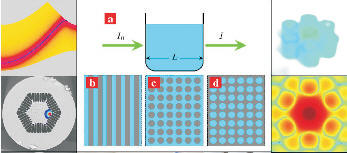 |
 |
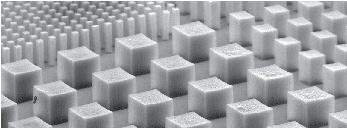 |
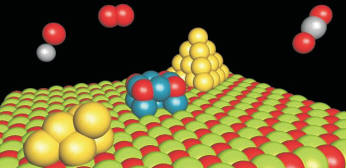 |
Laser Spectrometer Specifications
|
|
|
|
|
|
|
|
|
|
|
|
|
|
|
|
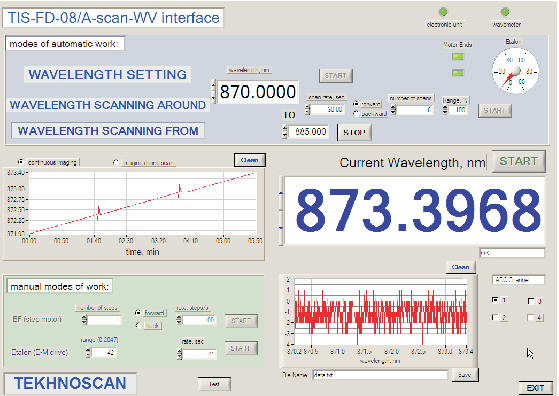
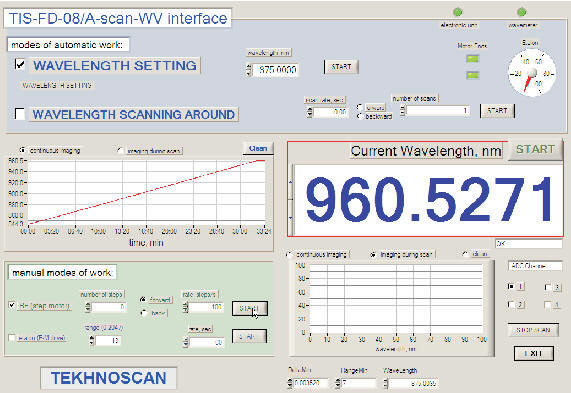
Related products
CW single-frequency ring Ti:Sapphire and dye lasers
Flagship
model of 15-kHz-linewidth CW Ti:Sapphire laser TIS-SF-777
CW single-frequency ring Ti:Sapphire laser model TIS-SF-07
Frequency-stabilized CW single-frequescy ring Dye laser DYE-SF-077
Resonant Frequency Doubler for CW single-frequency lasers, model FD-SF-07
Combined CW Ti:Sapphire/Dye laser with intracavity frequency doubling, model
TIS/DYE-FD-08
Combined CW single-frequency laser
system based on Ti:Sapphire and Dye laser TIS/DYE-SF-07
Del Mar Photonics, Inc.
4119 Twilight Ridge
San Diego, CA 92130
tel: (858) 876-3133
fax: (858) 630-2376
sales@dmphotonics.com